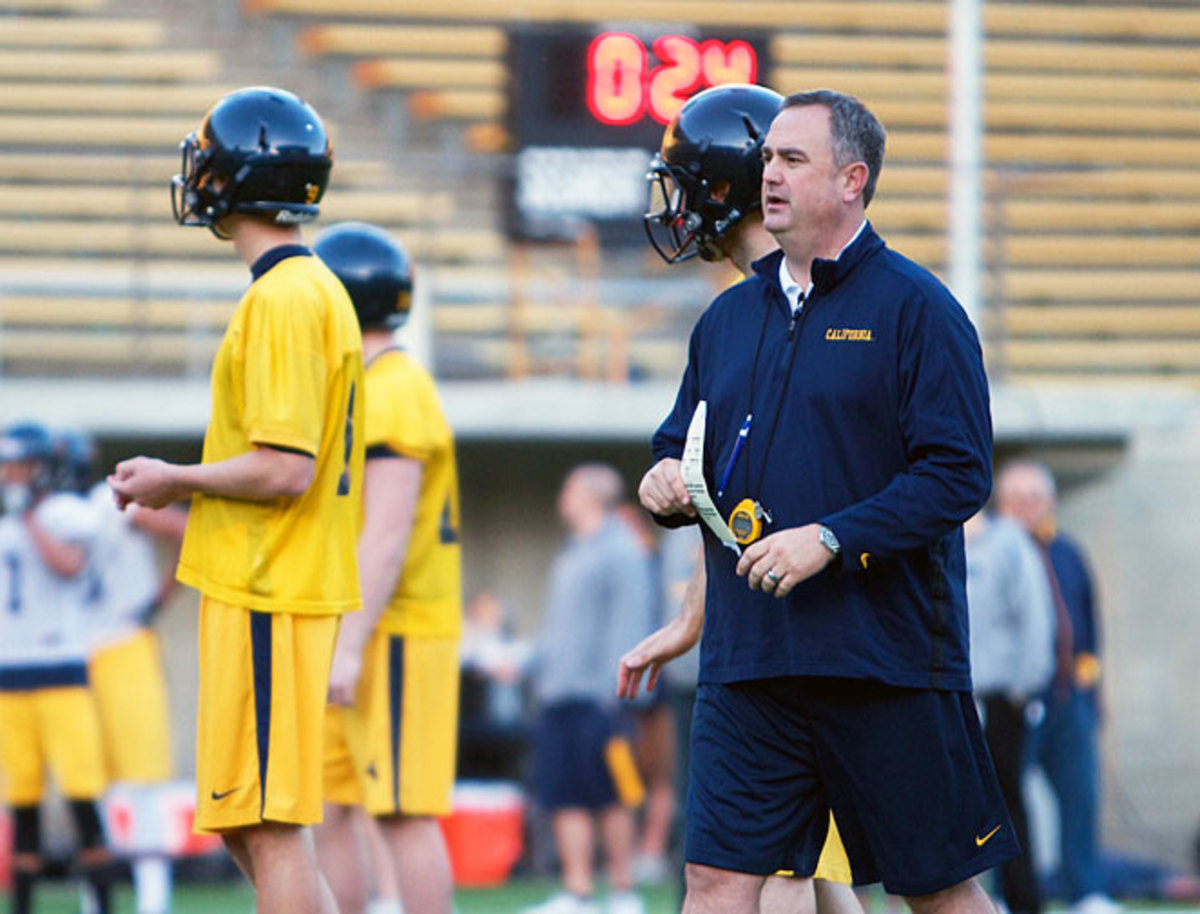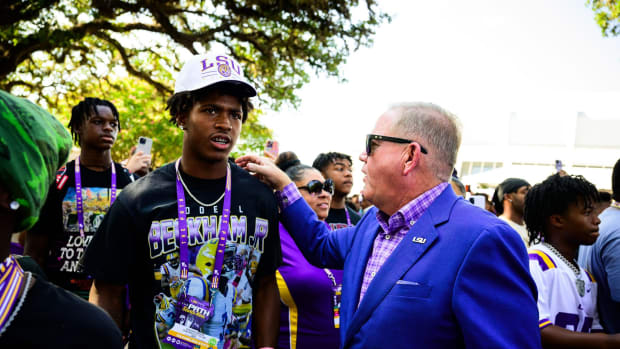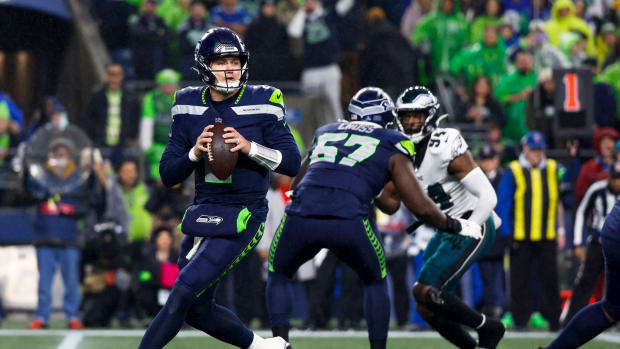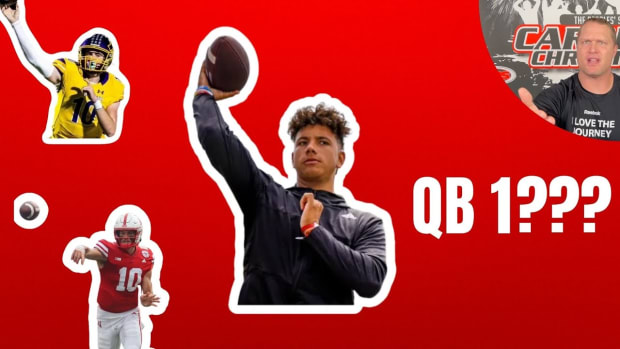Sonny Dykes set on energizing Cal's offense in 2013
BERKELEY, Calif. -- Cal began its first set of spring practices under new coach Sonny Dykes on Feb. 25, and anyone who so desires can plop down in the stands of Memorial Stadium and watch. "Our deal is, we've got nothing to hide," Dykes said. Visitors on a recent late afternoon mostly saw a mass of confusion -- five balls in the air once; players racing to the line for another snap; and lots and lots of shouting -- from both coaches and players.
"The colors are the only thing that look familiar," one spectator said.
The fact is, yellow and blue were two of the Bears' few distinguishing characteristics the past few years. After initially establishing an identity based on his success with quarterbacks Kyle Boller and Aaron Rodgers and skill players like J.J. Arrington, Marshawn Lynch and DeSean Jackson, one-time savior coach Jeff Tedford watched his program gradually lose its way. Saddled by poor quarterback play, a near-annual churn of coordinators and poor academic performance (a 48-percent graduation rate last year, lowest in the conference), the Bears went just 9-18 in the Pac-12 from 2010-12. During that time, Cal's cross-Bay rival, Stanford, ascended to national prominence. The timing couldn't have been worse; Memorial Stadium reopened last season following a two-year, $321-million renovation.
Enter Dykes, a laid-back 43-year-old Texan, and his decidedly Southern offensive coordinator, Tony Franklin. While largely lacking West Coast ties (Dykes spent three seasons in the Pac-12 at Arizona), the eccentric duo is a surprisingly natural fit for anti-establishment Berkeley. And their high-powered Air Raid offense -- check that, Bear Raid offense -- may provide just the identity Cal needs to distinguish itself in the increasingly crowded Bay Area sports market.
MANDEL: Analyzing burning questions facing each Pac-12 team this spring
This season, Cal will join the fast-growing group of teams -- West Virginia, Oklahoma State and Texas A&M among them -- whose offenses descended from original Air Raid practitioners Hal Mumme and Mike Leach. Dykes and Franklin were part of their original Kentucky staff in the late 1990s. And for an offense that's broken records virtually everywhere it's spread -- including last season at Louisiana Tech, where the Dykes/Franklin-coached Bulldogs led the nation in both total offense (577.9 yards per game) and scoring offense (51.5 points per game) -- it's surprisingly simple. The pair began their offensive installation on a Monday, and by Friday, the third practice of spring, they were practically done. The base offense consists of roughly 20 plays -- three screens, six runs and 12 or so pass plays -- that can be packaged together. By comparison, Cal's offense under Tedford contained more than 500 different signals.
The general philosophy of Air Raid teams is that the offense becomes harder to stop the faster and more skillfully the players can execute it -- something they accomplish by practicing the same handful of plays over and over. Dykes cites the Malcolm Gladwell book Outliers and its "Rule of 10,000 Hours," which professes that geniuses of a certain craft get to that level by accruing 10,000 hours of practice.
"It's not really a scheme-based offense as much as teaching fundamentals and techniques," Dykes said. "They [the defense] know we're going to throw slants. The idea is to be good enough throwing slants where they know it's coming and still can't stop it. Sometimes it works, sometimes it doesn't. The better players you have, the better it works."
That was never more apparent than 2012, when two schools, Washington State (coached by Leach) and Texas A&M (coached by Kevin Sumlin, who formerly employed Leach protégé Dana Holgorsen and Leach quarterback Kliff Kingsbury), both installed versions of the Air Raid. The Aggies, blessed with a transcendent quarterback and a pair of first-round tackles, raced to a top-three offense and top-five AP Poll finish. The Cougars, beset by a roster that had won nine games in four years, bumbled their way to a 3-9 season.
Cal is coming off its own 3-9 campaign, its worst finish in more than a decade. But Tedford's staff recruited well in recent years -- at least before ace recruiter Tosh Lupoi left for Washington in January 2012 -- and the Bears are not lacking for quarterbacks or receivers. Zach Kline, Rivals.com's No. 2 pro-style quarterback in the class of 2012, redshirted last season, and four-star freshman Jared Goff arrived in January. Touted receivers Bryce Treggs and Chris Harper played as freshmen last season, and redshirt freshman Kenny Lawler has been impressive in practice. "There's enough good players here to win now," Franklin said.
Added Dykes: "We want to answer as many questions as we can during the spring. Who's the quarterback going to be? Who are our best six to eight guys with the ball in the in their hands?"
Of course, there's an Air Raid-specific method to finding those answers. Cal opened spring with at least five contenders for the starting quarterback job, and the coaches hoped to narrow the field to two by spring's end, if not sooner. The more reps those players can get, the better. In fact, there are often five balls in the air at the same time during practice; during the "Routes on Air" drill, five different quarterbacks simultaneously throw routes to five different receivers. During regular passing drills, when one quarterback is getting reps, the others are standing behind him, mimicking taking the snap and either making the throw or handoff for the play that's been called.
And then there's the pace. Ideally, the Bears will operate at the same frenetic tempo that allowed Dykes' Louisiana Tech team to average 88 plays per game last season. They're not there quite yet ("It's ugly," Franklin said of the process), but the ball is placed and a new call is signaled within seconds of the prior play ending. Processing the call and getting everyone in the right place is taking a little bit longer.
"It's a really fast paced offense," Kline said. "What I've been trying to do is get as many plays off as I can, run the best play I can, and if I make a mistake, at least I'm making a mistake while going 100 miles an hour."
Unofficially, the quarterback field has already narrowed to three players: Kline, Goff and junior Austin Hinder, none of whom have prior game experience. Kline and Hinder are presumably the favorites. The 6-foot-4 Goff may be just as talented, but he entered spring at a lanky 185 pounds.
Running back is a bigger concern. Last year's top two rushers, C.J. Anderson and Isi Sofele, are gone, and top returnee Brendan Bigelow -- a blazing-fast scatback who may be an ideal fit for the offense (he broke two long touchdowns against Ohio State last year) -- is out for the spring while recovering from knee surgery. Contrary to perception, Dykes and Franklin would gladly run the ball if it's a viable option. Louisiana Tech averaged 227 yards on the ground last season.
"Air Raid, Bear Raid -- when we got here a label was thrown out there because of the [coaching] tree. We don't identify it that way," Franklin said. "Run it, throw it, it doesn't matter, whereas the true Air Raid is, we're going to throw it no matter what. We're going to play fast and find a way to put points on the board."
Franklin, remembered by many as the offensive coordinator who was fired by then-Auburn coach Tommy Tuberville just six games into the 2008 season, resurrected himself by lighting up scoreboards and winning league championships at Middle Tennessee (2009) and Louisiana Tech (2011). Dykes, formerly Arizona's offensive coordinator before becoming a head coach in 2010, said he reunited with Franklin specifically because the coordinator had embraced an inside running game. That, and his offenses play at a particularly high tempo.
"What we do is so simple, you have to offset it by doing something different," Dykes said. "You can shift and motion people before the play, like Stanford does, to disguise different formations. Our way of doing it, I prefer, is to go fast."
Fast is quickly becoming the new norm in the Pac-12. Oregon started the trend, and it's spread to Arizona, Arizona State, UCLA and now Cal. Interestingly, though, the Bears' new offense positions them almost diametrically opposite to archrival Stanford, the league's standard-bearer for traditional, pro-style power football. The Cardinal have been to three straight BCS games, including last year's Rose Bowl. The Bears will attempt to get there another way.
"They haven't been to a Rose Bowl here since '59," Dykes said. "This is a program that ought to go to Rose Bowls. There's a lot to sell."
Right now, they're selling transparency, tempo and the promise of the Bear Raid. They might not want to call the offense that, but if the nickname catches on, it means the scheme is working.
STAPLES: UCLA offense looking to become even more explosive in 2013






